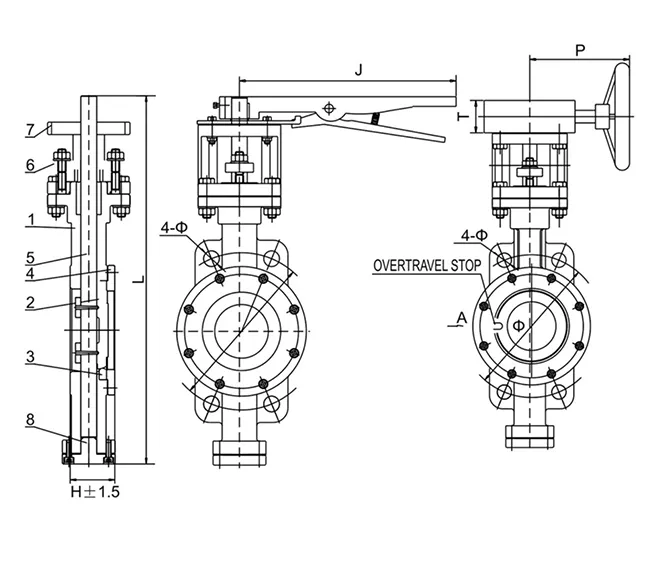des . 06, 2024 10:18 Back to list
Understanding the Functionality and Applications of Industrial Check Valves
Understanding Industrial Check Valves A Comprehensive Guide
In the realm of industrial applications, check valves play a crucial role in maintaining the efficiency and safety of various systems. These valves are designed to allow the flow of fluids in one direction while preventing backflow, thus safeguarding equipment and ensuring operational integrity. This article delves into the fundamental aspects of industrial check valves, their types, applications, and benefits.
What is a Check Valve?
A check valve is a type of one-way valve that automatically prevents backflow in a piping system. Its primary function is to protect pumps and other equipment from damage caused by reverse flow, which can occur due to pressure fluctuations. Check valves are employed in various sectors, including water treatment, oil and gas, chemical manufacturing, and HVAC systems.
Types of Check Valves
There are several types of check valves, each designed for specific applications and operating conditions
1. Swing Check Valve This type features a disc that swings on a hinge. It allows flow in one direction while closing when flow reverses. Swing check valves are suitable for low-pressure systems and are commonly used in water supply and drainage applications.
2. Ball Check Valve In this design, a spherical ball acts as the sealing mechanism. When the flow direction is correct, the ball is pushed away from its seat, allowing fluid to pass. If the flow reverses, the ball settles back into the seat, preventing backflow. Ball check valves are often used in high-pressure applications.
3. Lift Check Valve This valve uses a disc that is lifted by the flow of fluid. When the flow ceases or reverses, the disc falls back onto the seat, creating a seal. Lift check valves are well-suited for vertical installations and high-pressure situations, such as in boiler feed water systems.
4. Dual Plate Check Valve This innovative design features two plates that swing open when fluid flows in the desired direction. It is lightweight and offers lower pressure drop characteristics, making it ideal for use in various applications, including pipeline systems and offshore drilling.
Applications of Check Valves
Check valves are an essential component in many industrial processes. They are particularly valuable in systems where fluid backflow can lead to contamination or damage. Common applications include
industrial check valve

- Pumping Systems Check valves prevent backflow that can damage pumps, ensuring their longevity and efficient operation.
- Water Treatment In water and wastewater treatment plants, check valves help maintain the proper flow and prevent contamination of treated water
.- Chemical Processing In chemical manufacturing, these valves help avoid cross-contamination, protecting the integrity of various products.
- Oil and Gas Check valves are critical in oil and gas pipelines to prevent backflow, ensuring safety and operational efficiency.
Benefits of Using Check Valves
The use of industrial check valves offers several key benefits
- Protection Against Backflow The primary advantage is the prevention of backflow, which can cause serious damage to pumps and equipment.
- Improved System Efficiency By allowing unidirectional flow, check valves enhance the overall efficiency of fluid transport systems.
- Reduced Maintenance Costs With check valves in place, the risk of equipment damage decreases, leading to lower maintenance and replacement costs.
- Versatility With various designs available, check valves can be tailored to meet the specific needs of diverse applications.
Conclusion
Industrial check valves are critical components that ensure the safe and efficient operation of fluid systems across a range of industries. Understanding the different types, applications, and benefits of these valves can help organizations select the right solutions for their specific needs. By investing in high-quality check valves, industries can protect their equipment, maintain system integrity, and enhance overall operational efficiency. As technology advances, the design and functionality of check valves continue to evolve, promising even greater reliability and performance in the future.
Share